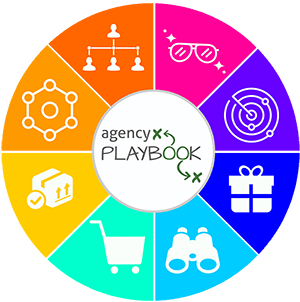#1 Way to Keep Your Clients Happy! Calculate Their Customer Lifetime Value
 Calculating your client’s customer lifetime value (CLV) is probably one of the easiest metrics to calculate, but is often overlooked. Most of the information is already being tracked in your client’s analytics. It’s what you do with that information that can keep your clients extremely happy.
Calculating your client’s customer lifetime value (CLV) is probably one of the easiest metrics to calculate, but is often overlooked. Most of the information is already being tracked in your client’s analytics. It’s what you do with that information that can keep your clients extremely happy.
Lifetime Value of a Customer
Many agencies try to calculate the Return on Investment (ROI) without knowing what it really means. ROI is a simple formula calculated by taking revenue versus expenses. However, it doesn’t focus on the goal of developing a long, happy relationship with customers. By only calculating ROI, you are missing the bigger picture. You’re only calculating a short-sighted figure and not many people are in business for the short term.
For example, say you develop a campaign that builds customer loyalty in the long term, but loses money in the short term? If you measure success only by ROI the campaign does not prove profitable. Which is something your client probably doesn’t want to hear. By using CLV, you show the client the long term results of the campaign.
When calculating a customer’s metric I want to know how much the customer spends, how often they spend it, and what activities or triggers create a repeat purchases. Knowing this kind of information will help you determine where your customer needs to invest, and what they need to avoid.
[ctt title=”How to Calculate Customer Lifetime Value (CRV)” tweet=”How to Calculate Customer Lifetime Value (CRV) http://ctt.ec/ZieDp+ via @jswenk #agencystruggles #agencygrowth” coverup=”ZieDp”]
There several variables in the CLV formula, but I found the basic formal below works well:
(Average Order Value) x (Number of Repeat Sales) x (Average Retention Time)
For example, your client sells a $20 monthly service for a period of 12 months with an average retention rate of two years.
($20) x (12 months) x (2 years) = $480
The CLV is $480. What if you calculated this for the client, and then suggested implementing a free trial for one month. Would offering a free trial, convince more people to signup for the monthly service? Your customer is only losing $20, but by using the CLV formula, your client sees the value of (or the limited negative impact of) offering the free trial month.
CLV provides points of leverage for improving business.
Once you recognize your client’s most profitable customers using CLV, you can segment your audience messaging to maximize profits and convey the importance of long-term goals, and most importantly your value as their agency.
Are you measuring lifetime value for your customer? Will you now? Comment below and let me know your thoughts and how you are going to implement this strategy.
Related topics you should check out:
- There are two winners to every Agency Pitch! Which one are you?
- How to attack your business development like a SHARK.
What’s Next?
Now you know how to calculate the lifetime value of a customer, it will allow you to take on projects that are more worthwhile for your digital agency. But what’s next on the list?
I have provided many successful agency owner with support and advice on many topics from what to do when you want to speed up sales processes, ways to increase your business profit margins or how you can build an authority for your agency.
Growing pains within an agency can be a major struggle and I can show you how to identify the different phases of agency growth, why placing a solid process for performance based pricing can be the best pricing strategy and what the three questions you need to ask yourself are for you to sell more!
Learn about my career and different experiences as well as tips, tricks and insights by checking out my blogs that cover a wide variety of topics.
Find more from my Ask Swenk series and more of my videos on my Youtube channel. There you will find advice from myself and other agency experts.

